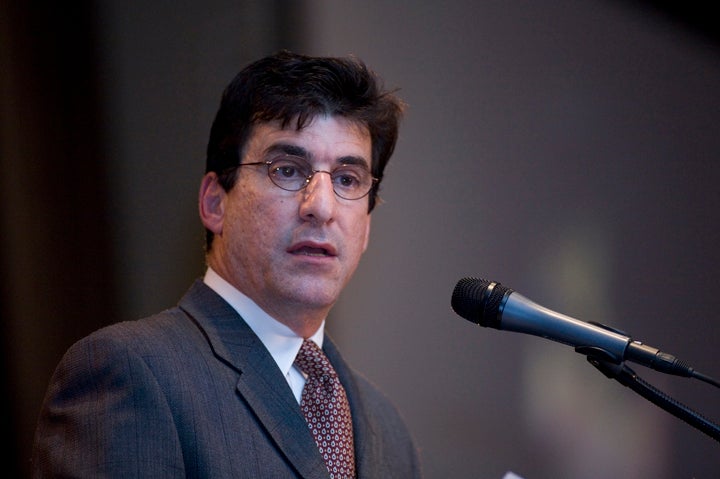DiBerardinis rallies troops, takes a stand

April 12, 2010
By Anthony Campisi
For PlanPhilly
It’s safe to say that park advocates really like Parks and Recreation commissioner Michael DiBerardinis.
His City Council budget testimony on Monday was punctuated several times by applause and a standing ovation and outlined a new direction for the city’s parks and recreation facilities, to be consolidated under the new Department of Parks and Recreation in July. Among the highlights: a budget increase of 7.6 percent, to $49.8 million and an ambitious tree planting initiative.
The administration plans on hiring 40 people and creating a new operating division focused on forest tree maintenance to help meet its goal of planting 300,000 new trees by 2015.
The city is also hoping to help that effort along by leveraging a requested $2.5 million capital appropriation to get matching funds from private foundations and government entities.
At the same time, the administration is promising added attention to the city’s recreation centers. Recreation commissioner Susan Slawson testified that the city had reduced its backlog of maintenance requests by 50 percent over the past 18 months and that the department was changing its maintenance policy for smaller centers to make sure they get regular janitorial services.
While most council members showered praise on DiBerardinis and his deputies, Councilman Bill Green appeared to sketch out a different vision from DiBerardinis. He criticized the proposed creation of a forestry and environmental resources management division, saying it would add unnecessary bureaucracy and divert funds from front-line workers who do the actual tree pruning.
DiBerardinis and his aides see the new division and other administrative moves — like increasing the number of the department’s administrative districts from five to eight — as necessary moves to better manage the larger department and its ambitious goals.
Green also said that the amount of money the city allocated would only pay for about 5,800 trees a year — not enough to meet the city’s goal by a long shot. While DiBerardinis admitted the city appropriation wouldn’t be enough alone, in the hearing’s moment of high drama, he told Council to fire him if the city only plants 5,800 trees in fiscal year 2011, saying he would work to bring in outside dollars to fund the additional plantings needed.
(City First District Councilman Frank DiCicco appeared to be willing to put his money where DiBerardinis’ mouth was, interrupting Green’s questioning to offer to join in a betting pool on the commissioner’s side.)
After the hearing, DiBerardinis elaborated on that point, saying that New York City had managed to get a dollar-for-dollar match for money it spent on tree planting and that the city’s capital expenditure was necessary in order to show private players that the city is serious about its Greenworks environmental program. “We need to show investment” in order to convince donors to spend money, he said.
Both Green and Councilwoman Maria Quinones-Sanchez also appeared concerned about the effect the new direction the administration’s commitment to urban forestry would have on Philadelphians’ access to traditional recreation and park services. “I don’t think this budget reflects what we hear every day,” Quinones-Sanchez said, adding that she didn’t think enough was being budgeted for rec center maintenance and dead tree removal efforts, which were down to 630 trees removed this fiscal year from 2,500 trees in fiscal year 2006.
DiBerardinis, for his part, admitted that the budget wouldn’t totally address rec center maintenance needs, but said it would be a step in the right direction. Parks advocates were less skeptical than Council, however.
They prowled the corridor outside City Council chambers before the hearing, passing out information packets that urged Council to approve the administration’s proposed capital and operating budgets for the department, pointing out that the city spends $50 per capita on park-related expenditures, compared with an average of about $120 a person in big cities. San Francisco comes in as the biggest per capita spender, at $300 a person.
And no one could be upset with news that the Robin Hood Dell, which has been closed since 2007, will open for eight performances this summer starting July 12. DiBerardinis also pledged to open all functioning pools by getting money from private donors.
Contact the reporter at campisi.anthony@gmail.com
WHYY is your source for fact-based, in-depth journalism and information. As a nonprofit organization, we rely on financial support from readers like you. Please give today.



